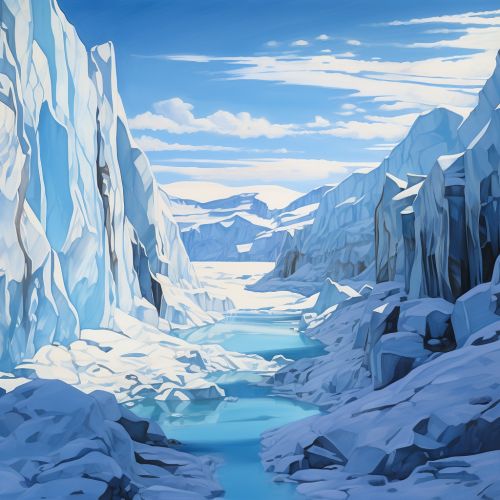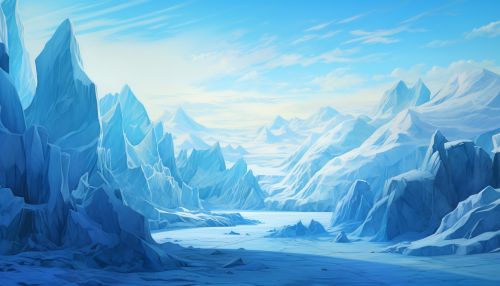Glaciology
Overview
Glaciology is the scientific study of glaciers and ice sheets, their formation, movement, and effects on the Earth's landscape. This field is a branch of earth science that combines aspects of physical geography, geology, meteorology, and climatology to understand the complex interactions between ice, water, and the underlying rock.


History of Glaciology
The study of glaciers has a long history, dating back to the 18th century when Swiss naturalist Horace-Bénédict de Saussure made the first systematic study of an alpine glacier. However, it was not until the mid-19th century that glaciology was recognized as a distinct scientific discipline. This was largely due to the work of Swiss scientist Louis Agassiz, who was the first to propose that a vast ice age had once covered much of the northern hemisphere.
Formation of Glaciers
Glaciers form when snow accumulates over many years, often centuries, and turns into ice. The transformation from snow to ice usually begins when the snow is buried under new layers of snow. The weight of the overlying snow compresses the underlying layers, causing them to re-crystallize and form a type of granular snow called firn. Over time, as more snow falls and is compacted, the firn turns into glacial ice.
Types of Glaciers
There are several types of glaciers, each with its unique characteristics and formation processes. The two main types are alpine glaciers, which form in mountainous regions, and continental glaciers, also known as ice sheets, which cover large areas of land.
Alpine Glaciers
Alpine glaciers, also known as mountain or valley glaciers, form in high mountain valleys. They are typically long and narrow, and they flow downhill from high elevations to lower elevations. The movement of alpine glaciers is primarily influenced by gravity and the slope of the terrain.
Continental Glaciers
Continental glaciers, or ice sheets, are much larger than alpine glaciers. They cover vast areas of land and can be thousands of meters thick. There are currently only two ice sheets in the world, located in Antarctica and Greenland. These ice sheets contain the majority of the Earth's freshwater.
Movement of Glaciers
Glaciers move under the force of gravity. This movement is facilitated by the pressure of the overlying ice, which causes the ice at the base of the glacier to melt and lubricate the glacier's movement. The rate of movement varies greatly, depending on factors such as the slope of the terrain, the thickness of the ice, and the temperature.
Glaciers and Climate Change
Glaciers are sensitive indicators of climate change. Changes in temperature and precipitation patterns can greatly affect the growth and retreat of glaciers. In recent decades, many glaciers around the world have been retreating at unprecedented rates, largely due to global warming. This has significant implications for sea-level rise and freshwater resources.
